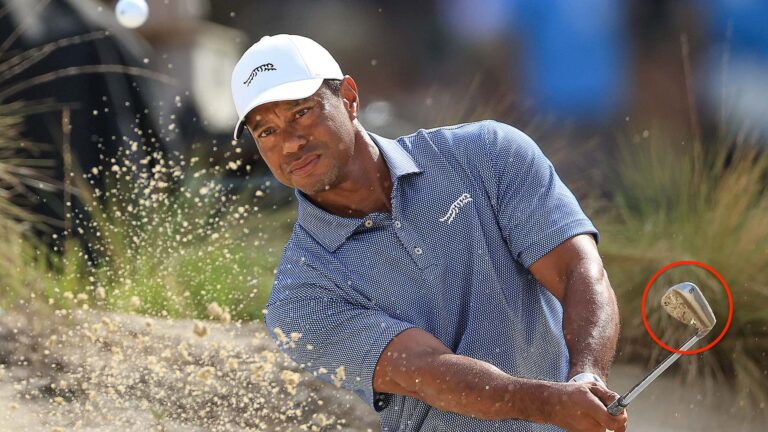Tiger Woods Adjusts His Game for Pinehurst No. 2: A Strategic Shift for the U.S. Open
Tiger Woods Adjusts His Game for Pinehurst No. 2: A Strategic Shift for the U.S. Open
The U.S. Open marks only the fourth time we’ve seen Tiger Woods in action this season. His sporadic appearances confirm what many assumed when the 15-time major winner returned at this year’s Masters: moving forward, Woods will primarily focus on the majors and a select few events benefiting his foundation. Given this, fans should savor every moment of his appearances, appreciating the opportunity to witness greatness, even if only sporadically.
Fewer tournament reps allow Woods to dedicate himself completely to the task at hand, which, in this case, is mastering Pinehurst No. 2. During his pre-tournament press conference, Woods highlighted the crucial area of his game that will define the tournament: the short game.
“I did a little bit of work on chipping and putting,” Woods explained. “But nothing can simulate what we have here this particular week — the little shots, the knobs and run-offs, and using wedges, long irons, or woods around the greens, even putter. There are so many different shots that you really can’t simulate unless you get on the property. That’s one reason I came up here last Tuesday, to try and do that. Quite a bit of work. The golf course has firmed up and gotten faster since then.”
Woods employed a variety of clubs — from wedges and fairway woods to long irons and the putter — during his practice rounds. Success at Pinehurst requires creativity and a short-term memory, alongside an understanding that equipment adjustments might be necessary to tackle different grasses and course conditions.
Woods, typically reluctant to alter the scoring tools in his bag for major championships, made an exception for Pinehurst. This week, his staff bag contains two TaylorMade MG4 wedges (56 and 60 degrees) with “Proto” stamped on each head. While they resemble his previous set, a closer inspection reveals some interesting modifications.
The milled grind sole has been removed from each head, as has the “TW Grind” Woods has used for years. These MG4 Proto wedges feature a simpler, flatter sole design with less trailing edge relief.
“Traditionally my soles have been pretty much standard in width, a little more rounded than some guys, just because I like to use different parts of the bounce, depending on what shot I’m going to use,” Woods said in 2017. “But it really hasn’t changed that much in like 15 years or so. It’s been pretty much the same.”
So, why the change now? Woods attributes it to the different grass conditions at Pinehurst since his previous visits in 1999 and 2005.
“I played it under bentgrass,” Woods explained. “So now having Bermuda, it’s very different. It’s grainy. We had the grain on the greens during those Open Championships, and they were softer than they are now. Granted, the surrounds were burnt out in ’05, but the greens were not like they are right now. That’s very different.
“The shot selections around the greens are more plentiful this year from either putting it to wedging it. I’ve used long irons and woods around the greens, and I’ve seen a number of guys do the same thing. The grain is going to play a big part of it.”
As short-game expert Parker McLachlin pointed out on social media, Woods is likely using wedges with more bounce this week. This doesn’t mean significantly more than the stated 11 degrees stamped on each head. Rather than adding leading and trailing edge relief to make the wedges play differently depending on the head’s position, Woods’ simpler sole design ensures more consistent leading edge height regardless of the shot.
Even though the areas around Pinehurst’s green complexes are extremely tight, the “grainy” Bermuda — especially if it’s against the grain — can cause the club to stick through impact. Adding forward shaft lean to the sand or lob wedge lowers the bounce, increasing the potential for the dreaded chunk. Adding bounce helps the wedge move through the turf more smoothly, a small adjustment that could yield significant dividends for Woods.
As Tiger Woods gears up for another challenging U.S. Open, his meticulous preparations and strategic equipment adjustments underscore his dedication and determination to compete at the highest level. This week at Pinehurst, Woods’ every move will be scrutinized as he navigates the course’s unique challenges, aiming for yet another moment of greatness in his illustrious career.






